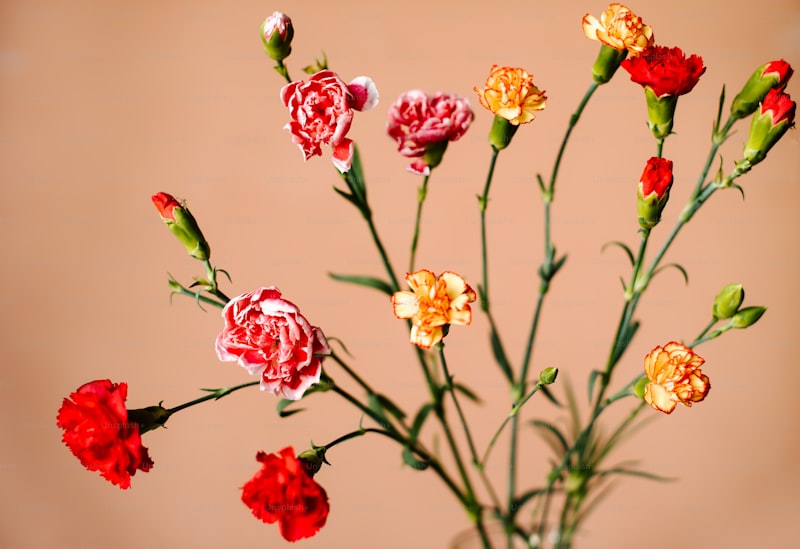Exploring Floral Arrangements for Different Cultures
Floral Arrangements: A Cultural Journey
Floral arrangements are more than just beautiful decorations; they are a vibrant expression of culture, tradition, and sentiment. Around the world, different cultures have their unique styles, meanings, and customs associated with flowers. In this article, we will explore the significance of floral arrangements in various cultures, highlighting how they are intertwined with customs and celebrations.
The Language of Flowers
The concept of using flowers to convey messages is known as "floriography." In many cultures, specific flowers represent specific feelings or messages. Here’s a quick overview:
| Flower | Meaning | Culture |
| Roses | Love and passion | Western |
| Chrysanthemums | Honoring the dead | Japanese |
| Lotus | Purity and enlightenment | Indian |
| Dahlias | Elegance and dignity | Mexican |
| Peonies | Good fortune and prosperity | Chinese |
Floral Arrangements Across Cultures
Each culture employs floral arrangements in its own unique way, reflecting its values and practices. Let's dive deeper into some noteworthy traditions:
1. Japanese Ikebana
Ikebana, the Japanese art of flower arrangement, differs significantly from Western floristry. It emphasizes harmony, balance, and minimalism. Unlike the massed arrangements commonly seen in the West, Ikebana focuses on individual stems and their relationships within the arrangement. It incorporates negative space, and the choice of each stem is highly intentional, allowing for a tranquil aesthetic. Traditional Ikebana often includes:
- Asymmetrical design
- Natural materials
- Aesthetic simplicity
These elements create a peaceful environment that encourages mindfulness and reflection.
2. Mexican Day of the Dead
In Mexico, floral arrangements play a crucial role in the Día de los Muertos (Day of the Dead) celebrations. Marigolds, known as "cempasúchil," are the most prominent flowers used during this festival. They are believed to guide the spirits of the deceased back to the world of the living. Floral arrangements are intricately designed, often adorning altars (ofrendas) dedicated to loved ones who have passed away. Elements of these arrangements include:
- Bright color palettes (yellow, orange)
- Incorporation of photographs and personal items
- Use of other skull motifs and symbols
The vibrant colors and aromas bring joy and life to the commemorative setting.
3. Indian Weddings
Floral arrangements are a staple in Indian weddings, symbolizing love, prosperity, and celebration. Flowers such as marigolds, jasmine, and roses are intricately woven into garlands, wedding setups, and decoration. Some popular arrangements include:
- Garlands (Mala) for the bride and groom
- Entrance decorations made of fresh flowers
- Rangoli designs incorporating flower petals
Indian floral arrangements highlight the importance of color, fragrance, and cultural symbolism.
4. Western Bouquets and Centerpieces
In Western cultures, floral arrangements often focus on aesthetics and seasonal themes. They are primarily used for various occasions such as weddings, birthdays, and corporate events. Here, floral arrangements can vary from:
- Bridal bouquets that showcase the bride's personality
- Centerpieces at banquet tables featuring seasonal blooms
- Gift bouquets for celebrations or sympathy
Each arrangement tells a story and fosters emotions from love to condolences.
5. Chinese Floral Traditions
In China, flowers are laden with symbolism and are often a part of celebrations and rituals. For instance, peonies, referred to as the "king of flowers," represent wealth and prosperity. When adorned in homes during festivals like Lunar New Year, they symbolize good fortune for the year ahead. Key flowers include:
- Chrysanthemums for longevity
- Orchids for purity and refinement
- Bamboo and plum blossom for resilience and perseverance
These flowers are arranged thoughtfully to convey auspicious wishes and blessings.

Floral Arrangements as Gifts
In many cultures, giving floral arrangements as gifts expresses feelings of gratitude, love, or sympathy. Different flowers are chosen based on the recipient’s preferences or the occasion. Here are some culturally significant gifts:
- Red roses for romance (Western cultures)
- Chrysanthemums for remembrance (Japanese culture)
- Lilies for funerals (various cultures)
When gifting flowers, understanding the cultural implications can enhance the sentiment behind the gift.
Conclusion
Floral arrangements play a pivotal role across different cultures, each holding unique meanings and significance. They contribute to our celebrations, reflect our emotions, and connect generations through traditions. From the minimalist beauty of Ikebana to the vibrant marigolds of Día de los Muertos, the world of floral arrangements invites us to appreciate the diversity of human expression. When creating or presenting floral arrangements, consider their cultural implications to resonate more deeply with your audience or loved ones.
Remember to explore local flowers and traditions when creating floral art or gifting arrangements to ensure a meaningful experience. Whether it's a simple bouquet or an elaborate display, the gesture will always carry sentiment, enriching our lives and cultures.